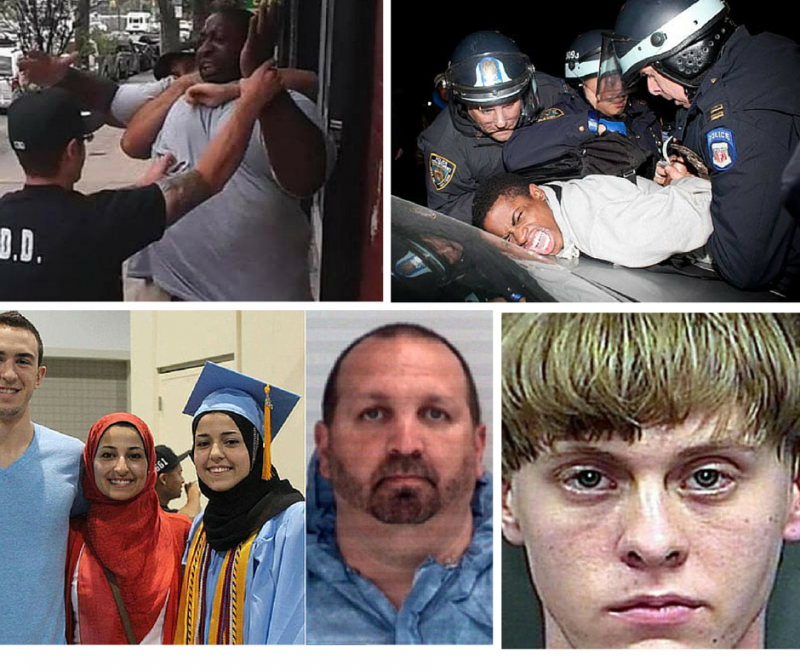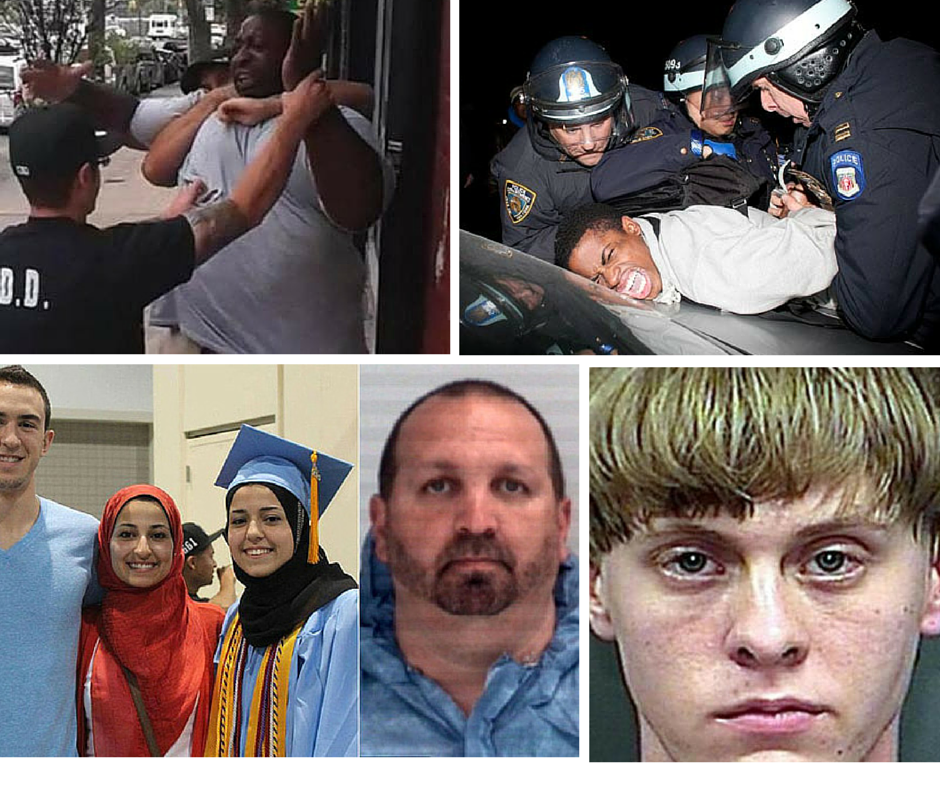 Another in a long line of American tragedies played itself this week out at one of America’s most historic black churches. A 21-year-old white man with a handgun walked into the Mother Emanuel AME Church in Charleston, South Carolina, and shot and killed nine African-Americans, including the pastor — all of whom were attending a Wednesday night Bible study. While carrying out the brutal attack, the terrorist, who is now in custody after being apprehended in North Carolina, reportedly said the victims were “raping our women and taking over our country.”
Another in a long line of American tragedies played itself this week out at one of America’s most historic black churches. A 21-year-old white man with a handgun walked into the Mother Emanuel AME Church in Charleston, South Carolina, and shot and killed nine African-Americans, including the pastor — all of whom were attending a Wednesday night Bible study. While carrying out the brutal attack, the terrorist, who is now in custody after being apprehended in North Carolina, reportedly said the victims were “raping our women and taking over our country.”
If there were any lingering doubts that the alleged gunman, Dylann Storm Roof, was motivated by race hatred, pictures soon surfaced of him wearing a jacket sporting flag patches of two of the most racist countries in living memory – Apartheid-era South Africa and Rhodesia. Those who knew Roof have come forward, telling of a young man who told racist jokes and hatched plots to start a second American Civil War. Tragically, those who heard of this reported plan to spark a race war prior to its enactment dismissed it as crazy.
As usual, the charges that Roof suffered from a form of madness have been trotted out to provide cover for this heinous crime by those made uncomfortable by its ideological aim. He was a pill popper, socially awkward, a crazed loner who descended into a madness — these explanations all whitewash Roof’s motives and distract us from the larger issues of race relations in this country. Instead of recognizing that a large portion of conservative white America holds many of the same beliefs that in effect drove Roof to terrorism, we instead focus on mental illness and the culpability of those living with it.
Terror, not madness
This is important, because this act of rhetorical gymnastics turns a terrorist fanatic with an evil, anti-American ideology into something explainable in a way that is comfortable and can be dismissed. Instead of rising to the challenge of confronting these hateful beliefs by calling them what they are, we give it a pass because to do otherwise raises unsettling questions: How many people in this country hold these abhorrent beliefs? How heavily armed are they? How well coordinated?
There’s also what’s possibly the most important question: How does the systematic propagation of conservative propaganda about minorities — or, more honestly, lies — nourish this ideology?
It can not be doubted that far-right hatred of this sort is a discernible ideology that’s long played a role in American society, no matter how much we may fob off individual examples of it. Since the modern era of right-wing violence began with the bombing of the Oklahoma City Federal Building in 1995, there has been a string of incidents in which white supremacists and far-right anti-government fanatics have killed or plotted to kill their fellow Americans due to racial and political differences. Indeed, the domestic radical right has killed more Americans since the 9/11 attacks than Islamic militants, and just this February the Department of Homeland Security warned of the growing terror threat emanating from the far right.
Uncomfortable truths
Yet this is all conveniently ignored by most. After all, who wants to confront it? Certainly not those who don’t hold these beliefs but live in the midst of those who do. In this way those who benefit from America’s overarching, yet archaic, racial and cultural status quo can disavow their own tacit participation in, and acceptance of, it. Thus, a white terrorist who guns down black people at a church becomes “mentally ill,” white cops who choke a man to death for selling cigarettes act in “self-defense,” and two dead young Muslims shot by an Islam-hating white guy become the victims of a “parking dispute.”
Even more grotesque is the way in which those who explain away the status quo try to play this terrorist act to their own advantage. Already, the NRA is trying to blame the victims for the tragedy. After all, if those peaceful parishioners had been armed to the teeth while at prayer, they could have fought back.
Even more atrocious, Rick Santorum has gone so far as to declare that the Charleston attack was an assault on Christians — in other words, it was an attack on people like him, and not black people. Why, say some on the right, it is “extraordinary” to think this is a racially motivated hate crime at all.
Yet, as comedian and social commentator Jon Stewart pointed out after the attack, we are faced with the absurd position where “the Confederate flag flies over South Carolina, and the roads are named for Confederate generals—and the white guy is the one who feels like his country is being taken away from him.” In fact, South Carolina is ground zero for white nationalism of this sort. It is the birthplace of the Confederacy and the place where the first shots were fired during the Civil War.
There are memorials and tributes to the racist traitors of the Lost Cause all over the South, but little rivals what can be found in the Palmetto State. In the aftermath of Wednesday’s tragedy, South Carolina Sen. Lindsey Graham defended the Stars and Bars flag that still flies on the grounds of the state capitol, telling CNN that it’s “part of who we are.”
Burying the past and its supporters
The great Southern writer William Faulkner famously wrote that in the South, “the past is never dead, it’s not even past.” This could be said of much of America, but increasingly a smaller and smaller part of it. This America — the America represented by cultural conservatives struggling to keep this country white and Christian, and whose ideology motivated the Mother Emanuel killer — is literally dying, and much of our current political polarization can be explained as a generational struggle between this fading segment of the population and the new, multicultural, multiracial and secular America that is even now being born. Like every birth and death, the process will be long, hard, and full of danger, but this fundamental change is coming and nothing, not even the bullets of a white supremacist, can stop it.
So, take heart: The violence perpetrated by Dylann Storm Roof is already being made meaningless by the inevitable march of time, demographics and social progress. It may not seem like it, but those taking the long view can clearly see the positive changes that are afoot. One can see it in how most of the country has reacted to this horrific violence, and even in the killer’s own family the disgust for what the terrorist has done is real and visceral. The implicit assumption that structural violence against people of color is acceptable is being increasingly challenged, and successfully so. We are winning, and we must not let our grief and anger convince us otherwise.


